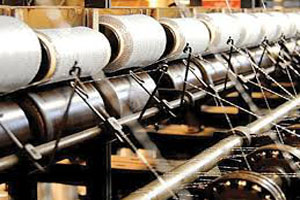
Resurge in yarn demand from China likely to boost textile exports for Pakistan
YarnsandFibers News Bureau 2014-09-01 15:50:00 – LahoreThe revival in yarn demand from China is a good omen for the Pakistan textile industry giving a boost to textile exports. The resurge in yarn demand has come as a sign of relief for the exporters who were worried over the waning global demand during the past one year, according to Seth Akber, senior vice chairman of All Pakistan Textile Mills Association (Aptma).
This trend is at the expense of cotton farmers as phutti rates started to decline amidst rebound in yarn demand in the foreign market. Though lower cotton rates might benefit the industry for the time being, yet farmers would not be able to recover cultivation cost at those prices. Depressed cotton rates likely to discourage the farmers that might result in lower cotton acreage next year, said Hamid Malhi, director of Farmers Associates of Pakistan.
Cotton production in Pakistan has remained stagnant for the last two decades. Around two million cotton bales had to be imported to meet the shortfall.
The low Chinese demand along with power shortages, power tariffs hike and rupee depreciation against dollar have already led to the decline of spinning and fabric sector and caused the shutdown of a number of spinning mills in the country.
According to Chairman Aptma Punjab SM Tanveer, the main problem faced by the spinners and weaver was the high cost of electricity.
The industry together operated at 60 percent of production capacity in December-June 2014 because the cost of power mix from self-generation through gas and state-supplied power was not viable.
Lower cotton rates would definitely help the spinners and downstream industry. But the local cotton prices are reflective of the global cotton rates.
China is sitting on a huge cotton stocks enough to feed its industry for 18 months, leading to reduction in cotton prices in India, US and Australia – the three largest cotton suppliers in the world.
While Economist Faisal Qamar, said that spinners particularly suffered more because they had huge stocks of cotton bought on global rates based on high dollar rate. Those stocks have now been consumed.
Another reason is the increase in the value of dollar during the last four weeks. The rupee was revalued from Rs108 to Rs97 about nine months due to which the payments received on shipments already made were 10 to 12 percent less.
Market Intelligence
Ask for free sample Report

experience
Customer Base
dedicated team
Countries Served Worldwide









